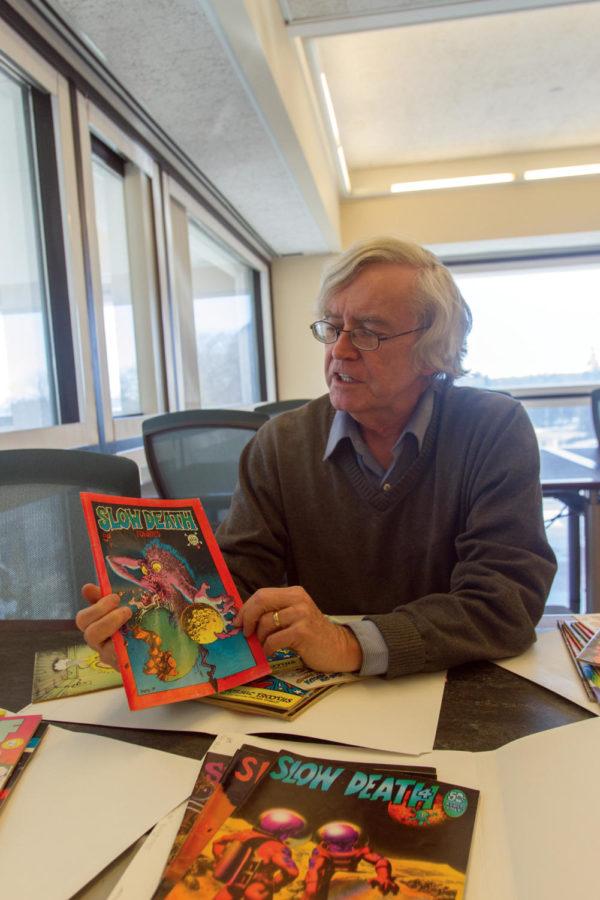Underground Comix have rich history
February 14, 2013
Antiquarianism is the collecting of ancient Greek and Roman art by Renaissance artists like Michelangelo and Leonardo.
For a lot of people, the connection between comic books and Renaissance art may be nonexistent. For associate professor John Cunnally, it was clear.
The Underground Comix are Cunnally’s main area of study, and his collection of them from the 1960s and 1970s are proof of it.
Underground Comix are rarely collected, but Parks Library has more than 1,500 issues in Special Collections for anyone wanting to get a taste of this movement.
“We’ve had everyone from researchers from around the world to students come look at the collection,” said Michele Christian, collections archivist and university records analyst at Parks Library.
“You could say that this idea of telling stories and making arguments by combining pictures and words starts then in the Renaissance,” Cunnally said.
Throughout the Renaissance, there were more arguments about religion than anything else, Cunnally said, so the images of that period would come from different sides of religious arguments.
“Ever since then, comics, whether they’re newspaper comic strips, comic books or modern contemporary graphic novels, have always had a reputation for pushing some kind of agenda,” Cunnally said.
The Underground Comix of the late 1960s and 1970s were created during a time of social revolution. Cunnally said people tried to promote new ideas about politics, sex, drug use, religion and moral values. Comix became a natural way to promote these ideas.
“It’s a medium that is very psychologically attractive. Whenever you read a comic book or comic strip, you’re participating in it, because you have to link up the different pictures in your mind. You’re a part of the creative process,” Cunnally said.
Cunnally said the Underground Comix promoted some people’s values from the late ‘60s and ‘70s through graphic images of violence and sex while promoting the use of psychedelics and hallucinogens as a good way to cause religious experiences and personal discoveries.
These comic books covered a variety of topics from political unrest to abortion during a time when it was controversial and illegal. They also covered topics like established religions, incest, sexuality, violence, drugs and divorce.
The title of the first Underground Comix to come out was “Zap.”
“Zap” was created by Robert Crumb in February 1968. Crumb took the comics around to shops himself to sell them. When they turned out to be popular, he printed off more and made eight issues that year.
As the Underground Comix became more popular, other artists joined Crumb. Each had their own individual style based on their personal experiences through life and their training.
The combination of all these made it so that none of the titles looked too similar. This was an original trait to the Underground Comix, particularly when compared to Marvel or DC comics, which can share the same traits of similarly trained artists.
The popularity of these comic books continued to rise until 1975 when the government began closing down shops for selling illegal items in their stores. As the shops closed, Underground Comix began to deteriorate as well. Due to its popularity, it was able to keep going on subscriptions alone for a while, but eventually even that couldn’t support it anymore.
More of the artists who did these comics disappeared into obscurity, but a few, like Crumb, were able to gain fame through syndication.
During the glory days of Underground Comix, artists didn’t make much money, and the profits that were made from the comics went to furthering their cause.
“We use art to shine light on what people thought, what they believed and what kind of lifestyle they had,” Cunnally said.
Parks Library collected many of their issues during the ‘70s and ‘80s. Some of them were purchased, but most of them were donated.
“The Underground Comix are in Special Collections because they are so rare,” said Christian.
Special Collections are open from 9 a.m. to 4 p.m. Monday through Friday, and anyone is welcome to come take a look.







